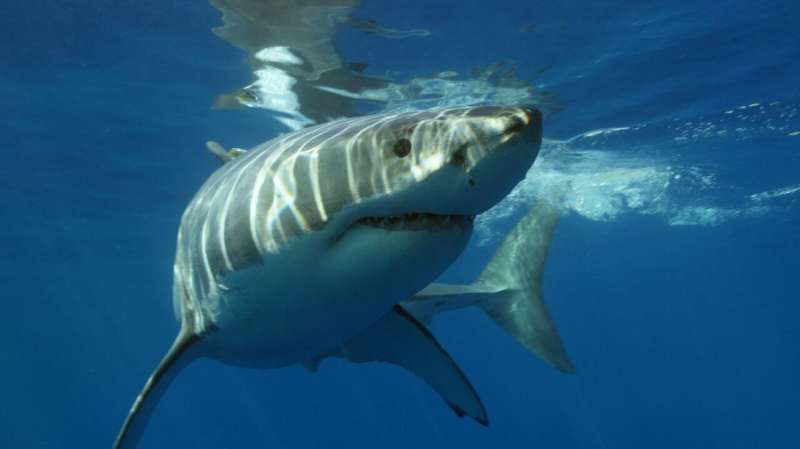July 24, 2024 report
This article has been reviewed according to Science X's editorial process and policies. Editors have highlighted the following attributes while ensuring the content's credibility:
fact-checked
peer-reviewed publication
trusted source
proofread
New way to analyze riblet denticles on modern great white sharks sheds light on swimming speed

A team of engineers and zoologists affiliated with several institutions in Japan has developed a new way to study riblet denticles on shark skin. In their study, published in the Journal of the Royal Society Interface, the group used their new technique to make estimates of shark swimming speeds among species.
Prior research has shown that shark skin is covered with denticle-shaped structures featuring riblets that have evolved to make them as efficient as possible as they swim. The unique skin structures reduce drag, allowing for smooth swimming with less effort and less turbulence, which means less noise, helping the shark to sneak up on prey.
Prior research has also shown that differences in riblet shape between shark species can be related to swimming speed during such activities as patrolling and hunting. In this new effort, the research team took a new approach to studying the structures, their relationships to the sharks and how they impact swimming ability.
The group noted that great white sharks have dermal denticles with a high middle ridge and also ridges along both sides of their riblets. The researchers then quantified the samples using 3D X-ray microcomputed tomography, a flat plate body model and data from other shark studies—this allowed them to calculate swimming speed. They calculated great white shark migration swimming speeds to be on average 2.3 m/s with burst speeds to be approximately 5.1 m/s.
The team then applied the same techniques to megalodon denticle fossils and found that the ancient giant sharks likely swam at speeds up to 5.9 m/s when chasing prey, making them only slightly faster than today's largest shark. For comparison purposes, the researchers also conducted the same type of analysis on mako shark denticles and found that they swim after prey much faster, likely reaching speeds of up to 10.5 m/s.
The research team suggests their approach could be used in marine engineering applications such as making boats or submarines more efficient.
More information: 3-D shape of natural riblets in a great white shark: relationship between the denticle morphology and swimming speed of sharks, Journal of the Royal Society Interface (2024). DOI: 10.1098/rsif.2024.0063. royalsocietypublishing.org/doi … .1098/rsif.2024.0063
Journal information: Journal of the Royal Society Interface
© 2024 Science X Network
















